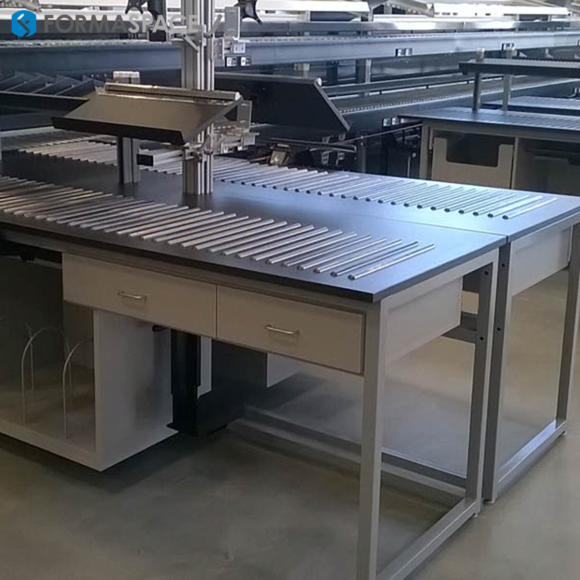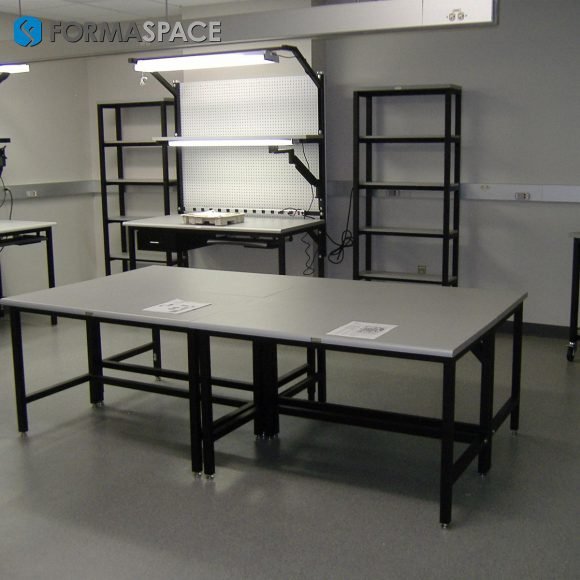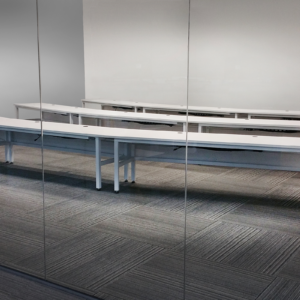The United Nations Conference on Climate Change, COP26, is taking place this week in Glasgow. As of this writing, there are some positive developments, including:

- Government leaders at COP26 have pledged to eliminate deforestation by 2030.
- More than 80 countries have pledged to reduce methane gases by 30% by 2030.
- India, with one of the world’s largest populations and the world’s third-worst polluter, has committed to becoming carbon neutral by 2070.
- The Biden Administration has proposed the US spend $555 billion on climate change and introduced a new international Green Steel initiative at COP26 to promote more energy-efficient metals production.
- The banking consortium Glasgow Financial Alliance for Net Zero has pledged $130 trillion in capital asset funding through 2050 to restructure industries and fund new technologies.
-
More than 40 nations at COP26 have pledged to phase out coal-fired power plants, but this is still seen as a disappointment, as coal-producing countries (including the US, Australia, India, China, and Russia) are committing to a worldwide transition away from coal.
These announcements are against a backdrop of renewed urgency about climate change, with UN climate researchers now saying that we need to limit average global temperature increases to no more than 1.5 degrees Celsius (previously it was 3.0) to avoid the worst possible consequences.
Environmental policymakers at the United Nations point out that action is needed now. We need to take immediate concrete steps to meet an intermediate goal of reducing greenhouse gases significantly by 2020 to avoid going past the 1.5 degrees Celsius threshold.
Time Has Marched On: Deadlines are now well within Business Planning Range
If we were to turn back the clock to 2000, the climate change issue was still quite serious, but the worst consequences seemed pretty far in the future.
But today, things are different. Over the past two decades, we have seen greater incidents of extreme weather events, including damaging coastal sea-level rise, flooding from torrential rain events, stronger hurricanes, intense freezes, longer and more frequent heatwaves, and extended droughts.
And, unlike back in 2000, we are now much closer to the middle of the century when climate scientists said things could take a turn for the worst.
For many facility planners and operations executives, the years 2030 and 2050 are now well within the horizon of medium and long-term planning frameworks, including planning new office construction projects or building manufacturing plants.
So, in this article, we want to address the question:
What does this mean for facility planners and operations executives?
In other words, what’s the bottom line for trying to achieve a 1.5C increase by 2050, and what do we need to plan for if we can’t achieve these goals, e.g. the world can’t stop the planet from warming up by 3.0C (or more)?

How Can Businesses Help Limit Average Temperature Increases to a Maximum of 1.5C?
How Will We Pay for It?
Some economic analysts calculate that the cost of reducing our greenhouse emissions could cost hundreds of trillions of dollars.
The question becomes, who pays for it and how.
The COP26 conference has not reached a consensus on this point.
There are several likely possibilities:
Carbon trading schemes may evolve into carbon taxes.
Many countries appear ready to agree to a minimum corporate tax.
Even energy-saving technologies may get taxed: there is talk of taxing EVs by the mile to make up for lost gasoline taxes that pay for highway infrastructure.
We Can Anticipate New Regulations
While there may be new incentives to increase energy efficiency and reduce greenhouse gas, there will likely be a slew of new regulations to speed up the process.
Car and truck manufacturers, as well as industrial engine manufacturers, have faced government efficiency regulations for years, but these will get tighter.
Regulations are likely to spread to other business sectors as well, so planning for energy usage and carbon emissions will become a core competency – much like supply chain management is today.
Digital technology (including overhead satellite sensors) will make it easier to track down polluters (such as the massive Russian methane leaks) to bring them into compliance with new regulations, such as the EPA’s proposed plan to limit methane emissions from oil and gas production.

Migrating to New Energy Sources
If we are to limit average global temperature rises to no more than 1.5 C, coal as an energy source will need to be phased out globally. (As mentioned above, coal-producing countries such as Australia are pushing back on this idea.)
Gas and diesel-powered ICE engines will also need to be phased out, if not eliminated entirely, to meet the new goals as well. It’s unclear if the transition to electric vehicles (or even hydrogen-powered vehicles – as discussed in our recent article) will lead to massive disruption or not, but this appears to be the direction we are going in, and business planners need to plan for new capital expenditures to update their fleets.
Renewable energy sources, such as wind and solar, will need to become mainstream, so much needs to be done to assure reliable energy storage overnight, such as investing heavily in new battery technologies.
Businesses may also want to consider on-site power generation options, such as solar arrays and battery backup systems, to gain independence from the grid or to provide a secondary backup system to literally keep the lights on.
Changes to Our Transportation Infrastructure
In a world with more climate extremes, our transportation infrastructure, already outdated in the US, becomes more of a risk. For example, we’ve seen record temperatures in the Pacific Northwest cause highways to buckle in the heat – making them impassable.
We’ve touched on the switch to electric (or hydrogen) powered vehicles. To make a workable transportation infrastructure, either system will need massive infrastructure investments across the nation to provide efficient access to recharging batteries or filling hydrogen tanks. Much of that investment is tied up in the two infrastructure bills pending in Congress.
While truck transportation is quite suitable for electric or hydrogen power (thanks to their ability to carry heavy batteries or hydrogen supplies onboard), we may see a regulatory push toward using more rail transportation for goods, as this is one of the most energy-efficient modes of transportation.
Seafaring transportation will also need to change; highly polluting bunker oil fuel will need to be phased out in favor of cleaner-burning fuels – or even cleaner-burning electric/natural gas/hydrogen power augmented with a return to sail power, especially for large cargo ships.
Air travel has already come under increased scrutiny, particularly in Europe, due to its higher carbon emissions per passenger mile compared to other modes of transportation. Companies who learned during the Covid pandemic to do without physical meetings may elect to reduce business travel flights. Electric-powered airplanes may be part of the solution; see our report on 10 Trends that Will Change the Course of the Aerospace Industry.
Finally, space travel, which is poised to become a mainstream industry, may face increased headwinds due to concerns over its outsized role in contributing to greenhouse gases.

New Dilemmas for Energy Intensive Manufacturing Processes
What does this mean for manufacturing companies, particularly metals manufacturing companies and those involved in making concrete, two industries in particular that contribute a greater share of greenhouse gasses?
For energy-intensive metals manufacturers, the Biden administration launched their Green Steel initiative at COP26, which seeks to rein in the estimated 7% greenhouse gas contribution directly tied to metals refining and manufacturing.
According to reporters at the Atlantic, this Green Steel initiative exposes a rift between the American approach of regulating pollution directly and the European’s long-range plans to move on from carbon credit trading to the introduction of carbon border taxes (a Carbon Border Adjustment Mechanism in EU-speak) on “cement, fertilizer, iron, steel, and aluminum” – all of which should make manufacturing companies take notice.
The bottom line is that there will undoubtedly be new carbon regulations in these energy-intensive sectors, but we don’t yet know how the details will shake out just yet.
Net Zero Buildings
The years 2030 and 2050 now fall squarely within the timeline horizons of company real estate planning.
What to do?
Given the lifespan of new buildings and facilities, new construction should incorporate Net-Zero design features from the start: money invested today will likely result in costs savings in the long run by being prepared to meet new energy conservation requirements without expensive retrofits.
As a result, we’ll likely see more office buildings incorporating features such as “cool roofs,” more trees on-site, more efficient ventilation, and increased insulation. As we touched on earlier, many buildings may incorporate on-site power generation and storage as well.

Site Selection and Building Structural Concerns
As we’ve seen in recent times, even at current levels of average global temperatures, we are seeing more damaging wind storms, hurricanes, flooding rain events, sea-level rise, droughts, and fires.
Facility planners will want to think more carefully about site selection, as well as elect to apply more comprehensive (and sustainable) building codes to withstand changing environmental threats.
We’ll touch more on this in the next section about what happens if average global temperatures rise to 3.0C or higher.
Business Planning for a 3.0 + Celsius Temperature Rise
What if the world can’t come together and keep the average world’s temperature from rising 3.0C or more?
Unfortunately, facility planners and operational executives need to also plan for this eventuality as well.
Should this eventuality come true, it will certainly be disruptive and expensive, so one can easily argue there is a sense of either pay now (to reduce carbon emissions) or pay much more later.
Insurance and Financing Concerns
One of the key financial considerations businesses is the ability to obtain insurance and financing at reasonable rates.
Here, we’re not talking specifically about financing oil and gas projects (there are current efforts underway to limit funding future fossil-fuel-based projects) but rather ordinary real estate mortgages for property as well as insurance coverage.
For example, most coastal areas, as well as properties (in the future), get reclassified as flood plains and may find it difficult to get financing or insurance coverage in the future. There may also be increased costs for insurance coverage for hail, windstorms, and fire as the weather becomes more unpredictable.
Local tax rates may also need to change, certainly along coastal areas where once valuable property that’s no longer suitable for building decreases the tax rolls, leaving other property owners to make up the difference.
Major Infrastructure Changes
Upgrading coastal infrastructure to protect properties from rising sea levels alone could cost trillions. For example, in New York City alone, much of the subway infrastructure needs to be upgraded to prevent rising storm waters from entering and destroying electric systems. It’s a similar picture up and down the coast, with South Florida and the Hampton Roads area (Virginia Beach) being particularly susceptible to rising sea levels. From a practical economic perspective, however, it’s unlikely every flood-prone area could receive enhanced protection from seawalls and levees.
But a 3.0C increase in average global temperatures could wreak havoc on our infrastructure overall.
For example (as mentioned above), not only could roads and bridges buckle in the summer heat, but other infrastructure systems, such as electric power grids, water systems, and sewage treatment plants, or pipelines, might need upgrades to handle new weather extremes. The same goes for our electronic communication systems: most current off-the-shelf computer systems and IC chips are not capable of operating at sustained high temperatures.

Dangerous sustained heatwaves (with life-threatening temps over 45C) are already becoming commonplace in the Middle East and Southeast Asia. As the world sets new heat records, we could see similar heatwaves become the new normal across much of the US during the summer as well. In this scenario, would scheduling all of our outdoor activities at night (including construction projects) become the norm because the days are too unbearably hot?
Increased Competition for Resources
Another consequence of higher global temperature will be increased competition for resources, such as the battle for potable water, a fight that has become increasingly common in the West as the battle for increasingly scarce water pits farmers against cities and industry.
Agricultural farmland may face additional pressures. Without cold winters, many devastating pests are moving further north (or living year-round), putting valuable farm crops and timber at risk. Also worrisome is the increase in incidents of straight-line derecho winds, torrential rains, and tornado outbreaks that have hit Midwestern states such as Nebraska, Kansas, and Oklahoma.
As CO2 levels rise to record concentration levels in the atmosphere we breathe at ground level, we may find it helps plant growth in the short run, but we may not understand all the consequences that this steady change will have on human health and natural resources.
Geographical Migration as a Mitigation Strategy
With rising ocean levels, increased drought, torrential rains, windstorms, hurricanes, and oppressive heat on the rise, many of those concerned about climate change are looking at environmental maps to identify where it will be safest to move to in the future.
The idea of migrating to a safer part of the country to mitigate climate risk may become a big trend in the coming years.
Areas such as the upper Midwest (such as Michigan) or the Northeast away from the coast (such as Vermont) may see a resurgence of real estate values as people located in vulnerable coastal areas choose to move to “safe” areas.
This type of geographic migration due to climate change will have consequences around the world.
Fortunately for us, our nation has a relatively low population density and spans the width of a continent. Other countries, especially along the equator, are not as lucky; indeed, we may see a “climate refugee” crisis of unprecedented proportions as people try to escape areas of intense heat and water shortages.
It’s for this reason that the Pentagon has long taken climate change seriously in their long-range planning, for this kind of pressure on resources is exactly the type of spark needed to ignite conflict and even war.
Geoengineering as a Last Resort
The cynics among us assert that billionaires such as Jeff Bezos and Elon Musk have given up on this planet and see the colonization of space as our only hope for the future.
Is this the case? We hope not.
Others point to Geoengineering efforts as a last-ditch effort to reverse average global temperatures. But could a well-intentioned effort backfire, as so many efforts to remake Nature (such as introducing invasive species) have failed in the past?
And how could we pay for a massive engineering project to cool down the planet? Does everyone have to agree to this? If so, how? Could the world unite around a United Nations initiative, for example?
Unfortunately, these are the type of questions that need to be considered if we continue to stay on the current path.

Formaspace Can Help You Improve Your Changing World
Long-lasting furniture, custom-built for your exact needs, here in the US using domestic materials.
That’s Formaspace.
If you can imagine it, we can build it, here at our factory headquarters in Austin, Texas.
Join our other clients, such as Apple, Capital One, Dell Computer, Google, Oculus, SpaceX, Twitter, and more.
Contact your Formaspace Design Consultant today and find out how we can work together to make your next project a success.






















